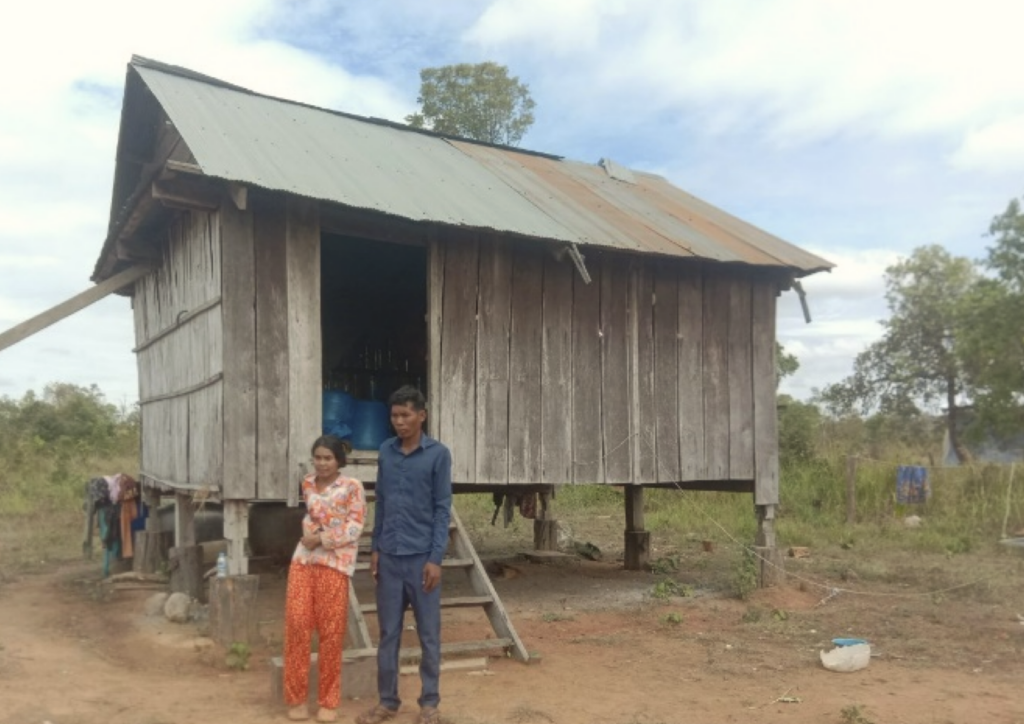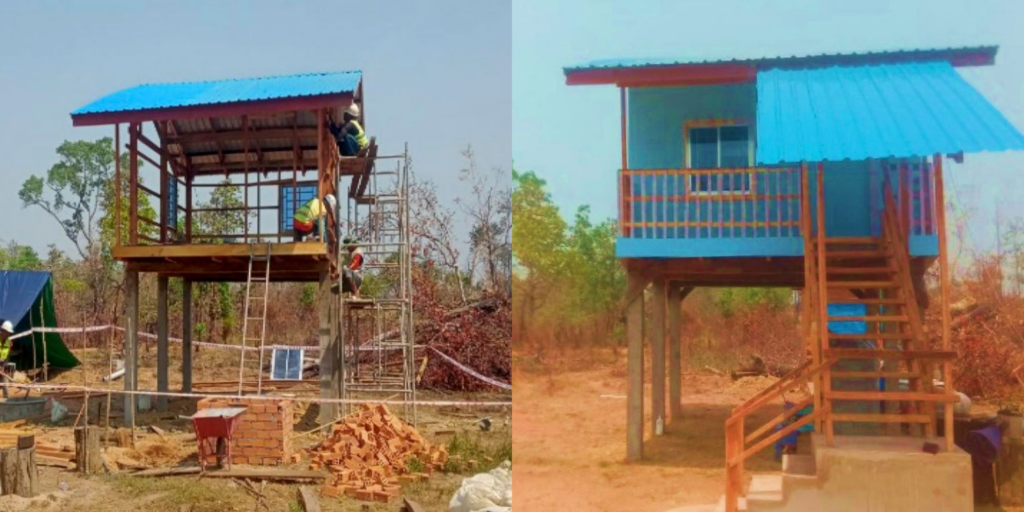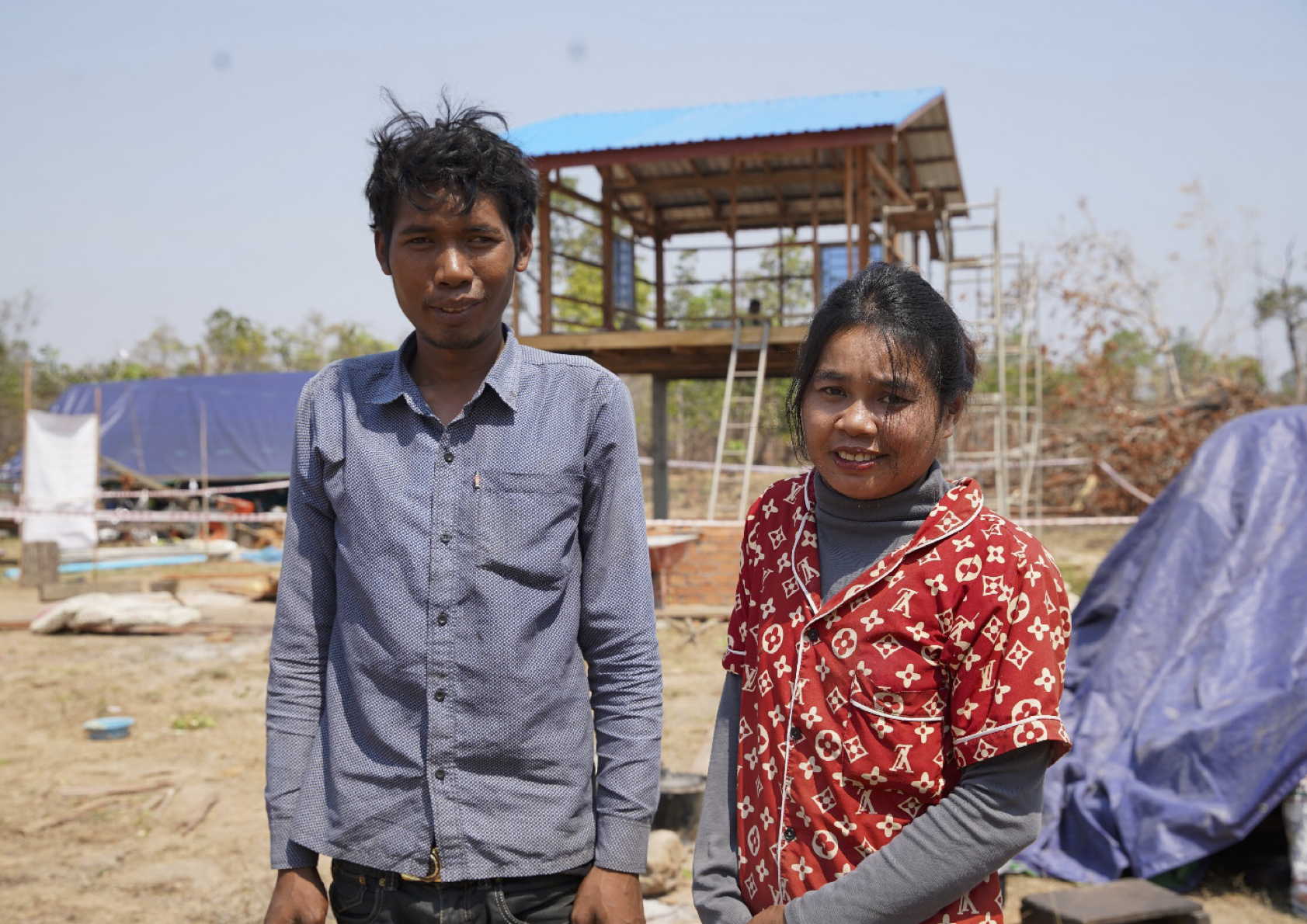
Savuth, Luch and their young daughter live in the Sangkum Thmey district, Preah Vihear province of Cambodia. The couple are both living with disabilities, making earning an income difficult; however, to gain independence, the young family left their parents’ house and moved to a plot of land provided by an uncle. They bought a small old bamboo hut that was already built, but after just two years and many difficulties later, the hut was in ruins and rain started pouring through the ceiling in bad weather.
Both Savuth and Luch work as farmers to support themselves with Luch being the main breadwinner. Luch works as a wage earner, growing and harvesting cassava and cashew nuts at his neighbour’s farm, earning $7.60 AUD a day and working a maximum of 15 days a month.
Whilst Savuth’s livelihood depends entirely on rice farming, growing 2000 square meters and yielding about 700kgs of paddy rice per year, unfortunately this is not enough to support her family year-round and it is still necessary to buy an extra 500kg’s per year from her neighbours
Because of the family’s low income, they could not afford to repair or build a new house despite their home being unsafe to live in for them and their baby.
“My family is really struggling because we have no regular income. I do not even have the money to buy milk for my baby”
– Savuth
Savuth and Luch were recommended to the project team for housing support by the PASSA (Participatory Approach to Safe Shelter Awareness) group and the local authorities. In partnership with Habitat for Humanity Australia, through the “Building Resilient and Inclusive Rural Communities through housing, WASH (Water, Sanitation and Hygiene), and climate change action in Cambodia” project, the construction supervisor conducted the feasibility to assess the family’s actual need and the site’s local context for developing the design. As a result, and from the discussion with Savuth and Luch, the wooden stilt house of 4 meters by 6 meters was designed and built for them on March 3, 2023.

The home has a toilet, solar panel, and water storage with two jars connecting to rainwater catchment from the roof. On March 8, the family moved into their new house to start their new lives.
“I feel very relieved to have moved into this new home. I am very motivated to do other work to support my family,” said Luch while looking at his new house. “When I was living in an old house, I was always worried that my hut would be blown away one day. But now I can sleep well, no matter how windy or rainy it is. I never thought my family would be able to afford this. Thank you all for helping my family and community.”
This project, Building Rural Resilient Communities (BRRC) project receives support from the Australian Government through the Australian NGO Cooperation Program (ANCP) and is in partnership with our implementing partner Habitat for Humanity Cambodia and Non-Timber Forest Products (NTFP) to provide access to safe shelter.



